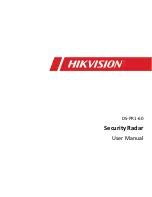
4
Quick Overview of Basic Controls
Multi-Function buttons
To use the primary function (
F, SC, PRI, ID, MO
) press the required button.
To use the secondary function (
DPX, MEM, LO, CAL, TSQ
) press and hold the button for 2 seconds.
To use the third function (
OS/GS, ALPHA, QUIET, MENU
), press
F/DPX
and press the required button.
To use the fourth function push the 200RX button for 2 seconds and then select the required instant channel.
Power ON / OFF
Rotate the power switch in a clockwise direction to turn the unit ON, adjust the volume to a comfortable
level. Rotate the Power Switch counter clockwise until it clicks to turn off the power.
Squelch
To adjust the level of squelch use the rotary
SQL
control. Turning the control counter clockwise reduces the
amount of squelch, and turning clockwise will increase the amount of squelch. To reduce the signals that you
can hear, increase the squelch, to hear more signals which may include weak signals decrease the squelch.
To Select a Channel
To select a channel rotate the
CH
control clockwise or counter clockwise to the desired channel.
PTT (Push-To-Talk) button
Before transmitting always listen on the channel to make sure it is not being used by another operator.
Select the desired channel. Press the PTT button on the microphone and speak normally into the
microphone. Hold it approx. 7 cm from your mouth. Release the PTT button to end the transmission and
listen for a reply.
Factory Reset
If the radio's display locks up or stops functioning properly, you might need to reset your UHF radio.
Caution: this procedure clears all the information you have stored in your UHF radio.
Before you reset your UHF radio, try turning it off and on again.
If your UHF radio is still not functioning correctly you may need to reset the UHF radio.
While holding the Channel up button, turn the radio on, only LCD backlight will be on for 1 to 2 seconds.
The radio will then return to its original factory out condition.
Wiring Methods
There are two possible wiring configurations for connecting to the vehicles power supply.
A. Radio stays ON when the ignition is switched OFF
Connect the radio’s negative (black) lead to the vehicle chassis, or directly to the battery’s negative terminal.
Connect the radio’s positive (red) lead via the 3 Amp fuse to the battery’s positive terminal. Alternatively,
the positive lead could be connected at the fuse box at a point that has DC Power continuously available
(preferably the battery side of the ignition switch) via the 3 Amp fuse.
B. Radio turns OFF with the ignition switch
Connect the radio’s negative (black) lead to the vehicle’s chassis, or directly to the battery’s negative
terminal.
The radios positive (red) lead should connect to an accessory point in the vehicle’s fuse box via the 3 Amp
fuse.
Antenna information
The antenna (not supplied) is of critical importance to maximise your output power and receiver sensitivity.
A poorly installed, inferior quality antenna, or one not designed for the correct frequency band, will give
poor performance. You should only purchase an antenna designed for the 477MHz frequency band.
Antenna installation
To obtain maximum performance from the radio, select a high quality antenna and mount it in a good
location.
Never press the PTT before connecting an antenna to the radio.
Optional accessories
SPE85
External speaker
If required, you may install an external (8 ohm, Minimum 5W power) speaker
fitted with a 3.5mm plug (not supplied).
Depending on the installation, it may be necessary to use an external speaker
(not supplied) to give improved volume and clarity. This can be plugged into the
external speaker (SP) socket on the rear of the unit.
MMM100
Magnetic microphone holder
























